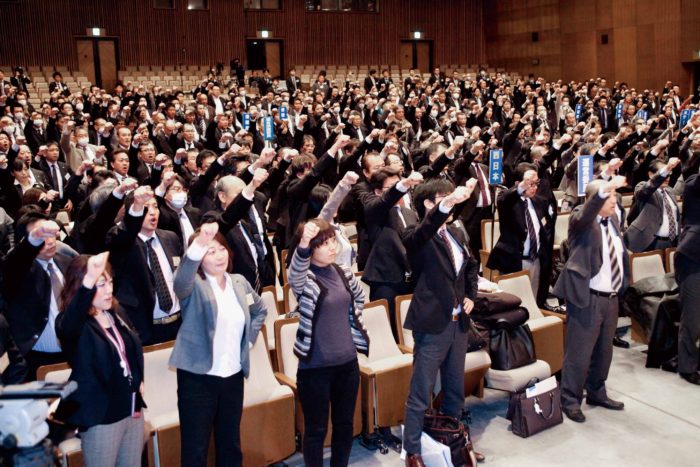Published in Nikkei Asian Review April 3rd 2014
These days it’s no easy matter for a political leader to stay popular. In wealthy countries such as the US and France, leaders who came to office talking of change and hope have seen their approval ratings collapse as the promised improvement in living standards failed to appear. In the emerging world, countries such as Turkey, Egypt, Thailand and the Ukraine are experiencing serious political crises that also have an economic dimension.
Everywhere, it seems, the public mood is sour and disillusioned.
The one exception is Japan. Fifteen months on Prime Minister Shinzo Abe remains almost as popular as when he took office. The reason is not hard to find. The reflationary policy package to which he gave his name is producing results. Not only are Japanese corporate profits at an all-time high, but the labour market has tightened to the extent that the jobs-offer-to-applicants ratio has exceeded parity. In theory, that means there is a job for anybody who wants one – a phenomenon which must seem like a distant dream to the millions of unemployed youngsters in the Eurozone.
This is the context in which Mr. Abe has implemented what he calls a “reverse Wassenaar Agreement,” referring to the 1982 pact between Dutch employers and unions which sought to tame inflation by trading wage restraint for job security.
Three decades later, the key economic problems are no longer excessive wage hikes and capacity constraints, but weak demand and deflationary pressures. Mr. Abe’s political brilliance has been to recognize that new problems require new solutions. His reversal of Wassenaar consists of using his political authority to cajole large companies into offering employees higher wages, thus lending impetus to the reflationary cause. Stingy companies were even threatened with being named and shamed.
As Mr. Abe noted in a recent article, “only when the long-missing link between corporate profitability and wages is restored will investment in houses, cars, and other durables, and household consumption in general, finally put Japan’s economy on a sustained growth path.” In the end he got what he wanted. The result of the 2014 “spring struggle” wage negotiations was that Japan’s largest companies offered the first rise in base pay this century. Graduate recruitment is expected to rise 15% this year.
Japan has some specific features that boost the chances of reflation taking hold. The combination of limited immigration and demographic ageing means that every year new entrants to the labour market are substantially fewer than the number of retirees. Thus, there is no downward pull on wages from what Marx called “the reserve army of the unemployed.”
The political dynamics are different too. Quantitative easing drives up asset prices. In some Western countries this has led to resentment that the wealthy few who own large portfolios of financial assets are benefiting at the expense of everyone else. Such concerns are rarely heard in Japan, where the distribution of wealth is unusually flat. According to Credit Suisse’s Global Wealth Databook, the wealthiest 10% of the American population controls 74% of total wealth. Even in supposedly egalitarian Scandinavia the equivalent numbers exceed 60%. In Japan, by contrast, the top decile owns just 34% of the total.
The key point, though, is the political commitment. Japan has made reflation its overriding priority. In most wealthy countries, policy-makers remain wedded to the themes of austerity, deregulation and cost-cutting that have been the conventional wisdom since the disinflationary 1980s. Mr.Abe is the first, though probably not the last, mainstream conservative to junk the technocratic consensus in favour of a pragmatic, growth-first strategy.
The need for change is particularly pressing in the Eurozone. While the European Central Bank has successfully defused the existential threat to the Euro posed by the debt crisis, the broader economic malaise appears to be deepening. Bank lending to the private sector is shrinking; the currency is overvalued by some 20%; and youth unemployment remains stuck at an eye-popping 24%.
Inflation has sunk to 0.5%, far below the ECB’s target of 2%. It is particularly disturbing that Germany’s rate of inflation is low and falling; under the single currency system the debt-ridden southern countries need inflation well below Germany’s in order to raise competitiveness and reduce imbalances. The way things stand they can look forward to perpetual deflation and ever-rising debt-to-GDP ratios. All pain, no gain.
The response of the European establishment to this dire situation is little more than a fatalistic “grin and bear it.” No surprise, then, that extremist and nationalist parties are expected to do well in this May’s elections to the European Parliament. The anti-EU, anti-immigration policies of Marine Le Pen’s Front National and Nigel Farage’s United Kingdom Independence Party at least have the merit of offering a coherent, if risky alternative.

What Europe needs is a reflationary strategy that adapts the best ideas of Abenomics to the European context. Aggressive monetary and fiscal stimulus are required to drive inflationary expectations higher. Companies should be offered tax breaks for increased hiring. The euro should be substantially cheaper, and there needs to be a mechanism for weaker countries to devalue their way back to competitiveness and restructure their debts.
Just as Mr. Abe learned a valuable lesson from the Dutch experience of the early 1980s, now it’s time for Europe’s policy-makers to learn from what Japan is doing today. Without new thinking of some sort the European story is unlikely to end well, either economically or politically.

